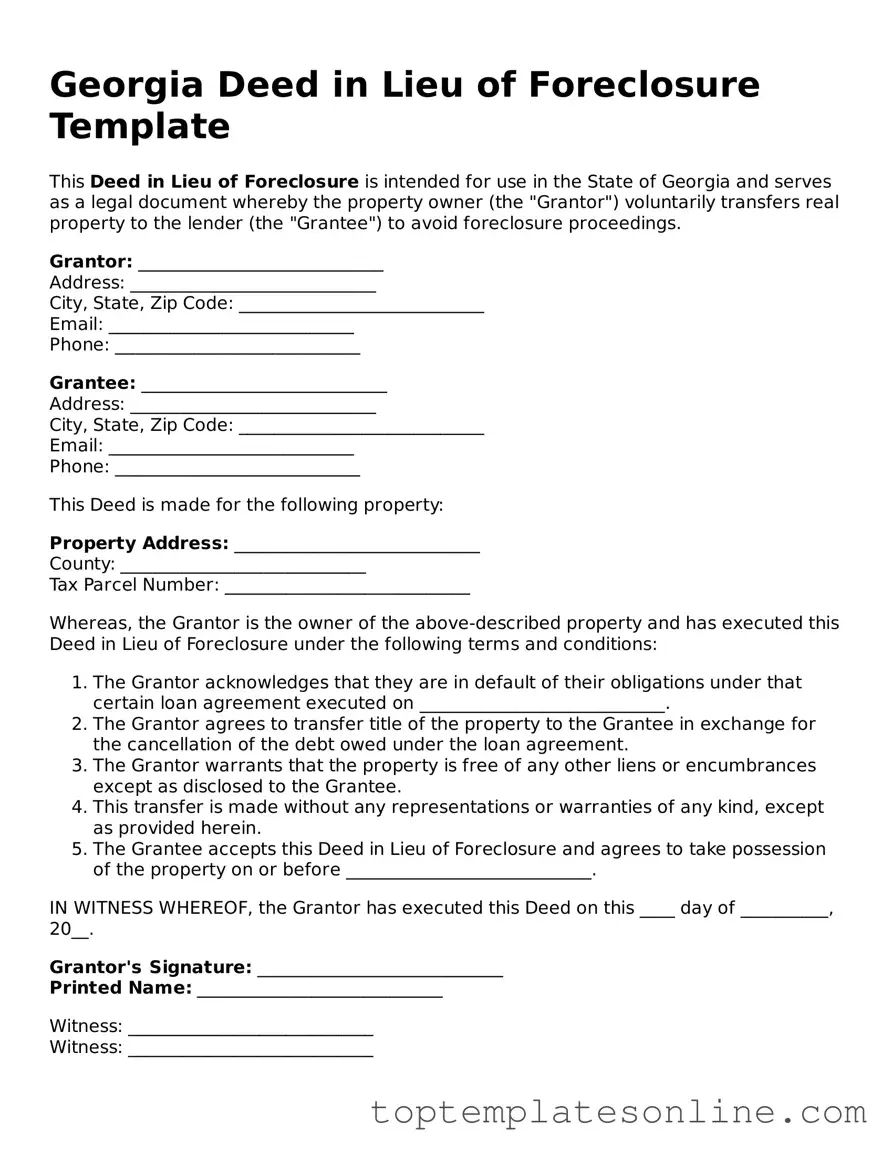Blank Deed in Lieu of Foreclosure Template for Georgia State
The Georgia Deed in Lieu of Foreclosure form is a legal document that allows a property owner to transfer their property title to a lender in exchange for the cancellation of a mortgage debt. This option can provide a smoother alternative to the lengthy foreclosure process. Understanding this form can empower homeowners facing financial difficulties to make informed decisions about their property and financial future.
Customize Deed in Lieu of Foreclosure Here
